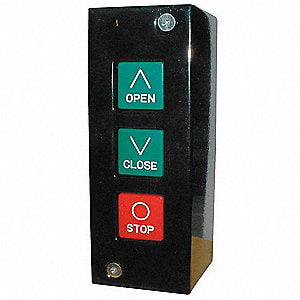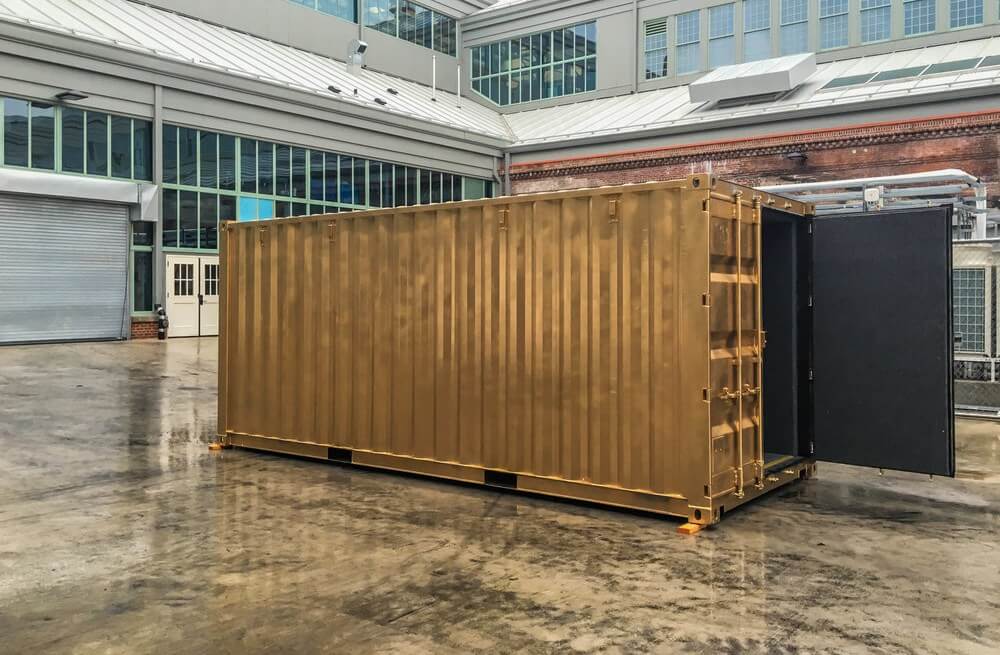NewLab - a Brooklyn-based hardware incubator - uses Kisi with their roll-up gates in order to:
- Open and close gates remotely.
- Track who opened and closed the gate last.
- Allow truck drivers to open the gate from their smartphone.
Girelle Guzman, New Labs’ Director of Time and Space says “We have a loading door. And so one of the problems we were having very early is that our members would open the doors and leave them open at night, which clearly created a security problem. And sometimes people needed access to the building because they would have deliveries late or would have deliveries come over the weekend when the building is not staffed. Some folks, they don't wait to get into the building.”
A typical gate opener button would not have allowed for any of this functionality and created a lot of friction in the operations process for the facility.

Managing Gate Access Control With Kisi #
Instead of using the normal button to open the gate, integrating Kisi with the loading dock gates allows the operations staff to:
- Have accountability through tracked events in Kisi of who opened / closed the gate (e.g: if it’s left open over night).
- Remotely close the gate in case it is left open.
- Remotely open the gate for anyone who does not normally have access to the gate.
- Allow regular loading dock users such as tenants to get large shipments or regular delivery drivers to open the gate from their mobile phone.

To give some more context on how New Lab works with Kisi, we’ve interviewed Girelle here more in depth:
Girelle, could you give us a short introduction about yourself?
#
My title is Director of Time and Space, which in other places would be Director of Operations. I oversee customer service, cafe, facilities, IT, and the development of our digital operating system. We have an in-home platform that a person could log into to book resources or time in our spaces or, for example, time in our shops. We have a directory for both companies and individuals in the community, so that facilitates connections between them. Now we are beginning to play around with things like access control in the building and automating some of the processes that right now are very manual or either distributed across multiple applications.
Do you have a popular visitor management system that you're integrated with already?
#
Yes, we do! We use ProxyClick, which allows us to send people a guest pass that is valid to the Navy Yard and then checking in at the reception. When you checked in, I got an email and a text message letting me know Ashley's here. The app is also able to send feedback to the front desk. For example, I can leave a note saying I will be there in five or 10 minutes. I could just simply go to the reception area and meet my guest there.
What technology features have helped NewLab create the innovative environment of the overall building and how have these features affected the member experience?
#
You can think of the NewLab OS as the digital layer that connects members with one another and just really having a custom-built application that members can use to use the space in general and to connect with one another is very innovative. There are many coworking spaces that use white-label technologies in the market like Nexudus or Cobot, for example. And we felt very strongly that we had to have a custom-built application. The company that we hired to develop the application for us spun-off and created its own company's based OS and now we have kind of like a client relationship where we provide a lot of feedback to them and collaborate with them on what new features they develop based on what we experience here in our space.
So I think that's key. Where Kisi comes in, there were certain decisions that were made about how we operated the space during the construction phase. I think one piece of advice that I would give to facilities managers is to try to be more included in the design and construction phase of the project so that when decisions get made they are more cost effective for construction but don't negatively impact the experience of whoever will help manage the space later on.
We have Kisi in all of our main entrances, so oftentimes we use Kisi to give one-time access to the building. So if we have folks who are coming in as visitors or coming in to set up early in the morning and need to get into the building when we don't have staff, we can give them Kisi access and they can go in. I have been at my house and then I have electricians or members who show up at five in the morning and I'm not going to be here at five, but I know that I can take my phone, I just give them access. So that kind of facilitates my role as the space manager. So Bernhard [CEO of Kisi] helped us integrate our doors with Kisi. And so now we use the application to provide virtual keys.
Another example, today we had a member who has a delivery for 10:30 pm tonight. And we're not a 24/7 space so they were asking how they should get into the building. So I told them no problem, we'll just grant you Kisi access for a day because it's very easy to schedule access for a certain time period. We really value Kisi as a mobile platform and the fact that is flexible as opposed to some other access control systems. It's very easy to use. Some other access control systems are complex to use and it can take our IT team some time to learn them. Kisi is very easy to onboard in terms of training.
In terms of the design of the building, was the idea to use different technologies from the beginning of the pre-construction phase or did these adaptations come over time? #
The key piece for us at the beginning was having only the basic digital operating system that we needed to be able to open the space. So things like meeting room bookings, a community directory, and a way to order from our cafe, those were the most important features we developed in the beginning. I think shortly after we began to listen to the needs of the people in the space. By now we know the applications that we have tested to streamline things. Our goal is to use technology so that the members don't have a fragmented experience. We use a digital platform as one visual layer that can be powered by multiple applications, but for the end user is one interface.

When NewLab was first conceptualized, how long did it take to find this location? This building is modern but in a historic area that is also changing very rapidly.
#
The founders of NewLab toured this property for the first time in 2011. One of the founders is a real estate developer whose mission was to breath new life into the urban buildings by working with educational or artistic organizations to revitalize urban spaces. This is in the middle of an old manufacturing district and the surrounding community was deeply affected when factories began to close. The founders asked how they could revitalize this valuable piece of land and contribute to new job creation. The construction part actually went fairly quickly. There was a long period of designing the interior spaces, but the construction project itself, from breaking ground only took about 10 months. The reason it took us so long to get to that point was because of regulations concerning historical things.
Are there any other sustainability goals or campaigns that NewLab has taken part in or any goals towards greater sustainability in its operations?
#
So this year we began to do a lot more about efficient waste management and getting away from single use utensils. We spend time talking to our staff making sure we use sustainable practices and sorting waste. And the food in our cafe, we stopped wrapping with plastic and have incorporated more recyclable materials. Starting in 2020 we will also be looking at composting and figuring out other ways we can reduce energy consumption. This building is also LEED certified and there is some automation of the heating and lighting system. in winter, since we're averaging 30 degrees (Fahrenheit), we're reducing electric consumption by switching to irradiant heating.
What percentage of tenants are freelancers, consultants or retailers? And how has that led to the breakdown of the different types of space you have?
#
Fifty percent of our companies are "flexible" or in our coworking space, which is what we call hot desks. That statistic is what really dictates the breakdown of our members. Even when people book private space, most of our members like the open feel of the coworking area. So I think that this space is designed to facilitate member's getting to work according to their preferences.





